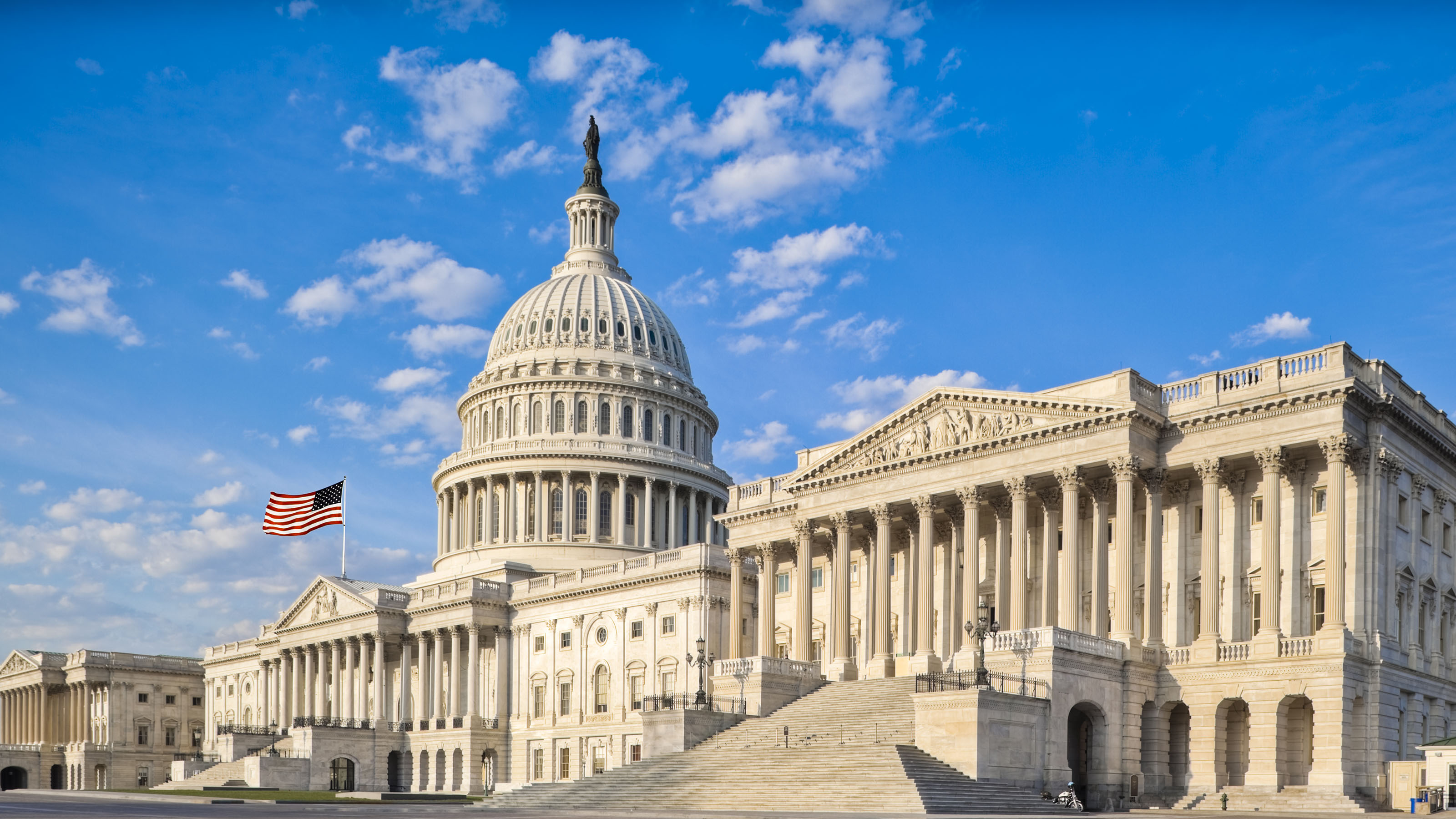7 Ways Biden Plans to Tax the Rich (And Maybe Some Not-So-Rich People)
How would wealthier Americans pay more in taxes under President Biden's American Families Plan? Let us count the ways.


President Biden's latest economic "Build Back Better" package – the $1.8 trillion American Families Plan – isn't kind to America's upper crust. It would provide a host of perks and freebies for low- and middle-income Americans, such as guaranteed family and medical leave, free preschool and community college, limits on child-care costs, extended tax breaks, and more. But to pay for all these goodies, the Biden plan also includes a long list of tax increases for the wealthiest Americans (and, perhaps, some people who aren't rich).
Whether any of the president's proposed tax increases ever make it into the tax code remains to be seen. Republicans in Congress will push back hard on the tax increases. And a handful of moderate Democrats will probably join them, too. So, don't be surprised if a fair number of the plan's revenue raisers are dropped or amended during the congressional sausage-making process…or even if some new tax boosts are added.
While we don't know yet which – if any – of the proposed tax increases will survive and be enacted into law, wise taxpayers will start studying the plan now so that they're prepared for the final results (any changes probably won't take effect until next year). To get you going in that direction, here's a list of the 7 ways the American Families Plan could raise taxes on the rich. But even if you're not particularly wealthy, make sure you read closely to see if you might be caught up in any of the proposed tax hikes, since a few of them could snare some not-so-rich people in addition to the one-percenters.

Increase the Top Income Tax Rate
The 2017 tax reform law signed by former President Trump lowered the highest federal personal income tax rate from 39.6% to 37%. According to the White House, this rate reduction gave a married couple with $2 million of taxable income a tax cut of more than $36,400. President Biden wants to reverse the rate change and bring the top rate back up to 39.6%.
For 2021, the following taxpayers will fall within the current 37% tax bracket:
- Single filers with taxable income over $523,600;
- Married couples filing a joint return with taxable income over $628,300;
- Married couples filing separate returns with taxable income over $314,150; and
- Head-of-household filers with taxable income over $523,600.
(For the complete 2021 tax brackets, see What Are the Income Tax Brackets for 2021 vs. 2020?)
President Biden has said many times that he won't raise taxes on anyone making less than $400,000 per year. But there have always been questions and a lack of clarity as to what this exactly means. For instance, does it apply to each individual or to each tax family? We still haven't received a crystal-clear answer to that question. As a result, we're not entirely sure if the president wants to adjust the starting point for the top-rate bracket to account for his $400,000 threshold. According to a report from Axios, an unnamed White House official said the 39.6% rate would only apply to single filers with taxable income over $452,700 and joint filers with taxable income exceeding $509,300. That would satisfy the president's promise for single people, but it's a bit trickier for married couples filing a joint return.
If the 39.6% rate kicks in on a joint return when taxable income surpasses $509,300, a married couple could end up being taxed at that rate even if both spouses earn well under $400,000 per year. For example, if Spouse A makes $270,000 and Spouse B makes $260,000, their combined income ($530,000) is over the $509,300 threshold. Using the 2021 tax brackets, they wouldn't even make it into the 37% bracket (they'd be in the 35% bracket). So, each spouse would face a tax increase under the Biden plan, even though neither one of them earn over $400,000 per year.
To be fair, this type of "marriage penalty" exists for the current 37% tax bracket, since the minimum taxable income for joint filers is less than twice the minimum amount for single filers. However, the current brackets weren't set up with a pledge not to raise taxes on anyone making less than $400,000 per year in the background. Perhaps the Biden administration will recognize this and eventually adjust the brackets to fix the marriage penalty issue.

Raise the Capital Gains Tax
The American Families Plan also calls for an increase in the capital gains tax rate for people earning $1 million or more.
Currently, gains from the sale of stocks, mutual funds, and other capital assets that are held for at least one year (i.e., long-term capital gains) are taxed at either a 0%, 15%, or 20% rate. The highest rate (20%) is paid by wealthier taxpayers – i.e., single filers with taxable income over $445,850, head-of-household filers with taxable income over $473,750, and married couples filing a joint return with taxable income over $501,600. Gains from the sale of capital assets held for less than one year (i.e., short-term capital gains) are taxed at the ordinary income tax rates.
Under the Biden plan, anyone making more than $1 million per year would have to pay a 39.6% tax on long-term capital gains – which is almost double the current top rate. As noted above, that's also the proposed top tax rate for ordinary income (e.g., wages). So, in effect, millionaires would completely lose the tax benefits of holding capital assets for more than one year. Plus, there's the existing 3.8% surtax on net investment income, which would bump the overall tax rate up to 43.4% for people with income exceeding $1 million.
[Note: A summary of the American Families Plan states that application of the 3.8% surtax is "inconsistent across taxpayers due to holes in the law." It then states that the president's plan would apply the surtax "consistently to those making over $400,000, ensuring that all high-income Americans pay the same Medicare taxes." No further details are provided, but this could mean expanding the surtax to cover certain income from the active participation in S corporations and limited partnerships.]

Eliminate Stepped-Up Basis on Inherited Property
There's another capital gains-related tax increase in the American Families Plan – eliminating the step up in basis allowed for inherited property. Under current law, if you inherit stock, real estate, or some other capital asset, your basis in the property is increased ("stepped up") to its fair market value on the date that the person who previously owned it died. This increase in basis also means you can immediately sell the inherited property and avoid paying capital gains tax, because there's technically no gain to tax. Why? Because gain is generally equal to the amount you receive from the sale minus your basis in the property. Assuming you sell the property for fair market value, the sales price will equal your basis…which results in zero gain (e.g., $1,000 – $1,000 = $0).
President Biden wants to change this result. Although details are scarce at this point, the president's plan would nullify the effects of stepped-up basis for gains of $1 million or more ($2 million or more for a married couple) – perhaps by taxing the property as if it were sold upon death. There would be exceptions to the new rules for property donated to charity and family-owned businesses and farms that the heirs continue to operate. Other yet-to-be-determined exceptions could also be added, such as for property inherited by a spouse or transferred through a trust.
This is one of the tax changes that could impact Americans making less than $400,000 per year – perhaps only indirectly. Anyone, regardless of their own income level, can inherit property. If the heir's basis is not adjusted upward any longer, that in essence is a tax increase on him or her. If the capital gains tax is levied before the property is transfer, that could mean there's less to inherit – which could be considered an indirect tax on the person receiving the property. It can be a bit tricky, but there's certainly the potential for someone inheriting property who makes less than $400,000 per year getting the short end of the stick because of this Biden proposal.

Tax Carried Interest as Ordinary Income
In certain case, an investment fund manager can treat earned income as long-term capital gain. Known as the "carried interest" loophole, this lets the fund manager take advantage of the long-term capital gains tax rates, which are usually lower than the ordinary income tax rates he or she would otherwise have to pay on the income.
The American Families Plan calls for the elimination of the carried interest rules. The Biden administration sees this change as "an important structural change that is necessary to ensure that we have a tax code that treats all workers fairly."
For a fund manager, this change would result in a potential tax increase on the affected income of up to 19.6%. For example, assuming the income is high enough, he or she could go from a rate of 23.8% (20% capital gain rate + 3.8% surtax on net investment income) to 43.4% (39.6% ordinary tax rate + 3.8% surtax on NII).
One would think that most, if not all, fund managers earn at least $400,000 per year. But if there are any of them out there making less than that amount, then this change could raise taxes on someone making less than Biden's $400,000 per year threshold. Yeah, it's not likely…but it's theoretical possible.

Curtail Like-Kind Exchanges
If you sell real property used for business or held as an investment and then turn around and buy other business or investment property that is the same type, you're generally not required to recognize gain or loss for tax purposes under the "like-kind" exchange rules. Properties are of "like-kind" if they're of the same nature or character. For example, an apartment building would generally be like-kind to another apartment building. This is true even if they differ in grade or quality.
The Biden plan would end this special real estate tax break for gains greater than $500,000. Since there are no income thresholds for the taxpayer, this change could potentially prevent someone making less than $400,000 per year from making a tax-free exchange (the $500,000 gain could be offset by other tax deductions, exemptions, or credits). Again, in most cases, wealthier people would be impacted by this change, but it's possible that someone making less than $400,000 could also end up with a higher tax bill if this proposal became law.

Extend Business Loss Limitation Rule
Under the 2017 tax reform law, individuals operating a trade or business can't deduct losses exceeding $250,000 ($500,000 for joint filers) on Schedule C. The excess losses may, however, be carried forward to later tax years. This rule is currently set to expire in 2027 (it was also generally suspended by the CARES Act for the 2018 to 2020 tax years).
President Biden's American Families Plan calls for this business loss limitation rule to be made permanent. According to the plan summary, 80% of the affected business loss deductions would go to people making over $1 million. But, once again, someone making less than $400,000 could also incur a large business loss that wouldn't be deductible after 2026 if the Biden proposal is adopted.

Increase Enforcement Activities
Biden wants to increase tax enforcement activities aimed at high-income Americans – and give the IRS an extra $80 billion over a 10-year period to do it. While this really isn't a tax increase, it certainly could result in wealthier Americans pay more in taxes. The idea is to "increase investment in the IRS, while ensuring that the additional resources go toward enforcement against those with the highest incomes, rather than Americans with actual income less than $400,000." The IRS would also focus resources on large corporations, other businesses, and estates. The audit rate for Americans making less than $400,000 per year wouldn't increase under the president's plan.
The American Families Plan summary also states that financial institutions would be required to "report information on account flows so that earnings from investments and business activity are subject to reporting more like wages already are." The income of wealthier Americans disproportionately comes from investments and small businesses, which are harder for the IRS to verify than other sources of income like wages. As a result, the Treasury Department estimates that up to 55% of taxes owed on some of these less visible income streams goes unpaid. And more of that unpaid tax is owed by people with higher incomes. The proposal would funnel additional information to the IRS about the hard-to-verify income without burdening taxpayers.
All-in-all, the White House claims that the increased tax enforcement efforts would raise $700 billion in revenue over a 10-year period.
Profit and prosper with the best of Kiplinger's advice on investing, taxes, retirement, personal finance and much more. Delivered daily. Enter your email in the box and click Sign Me Up.
Rocky Mengle was a Senior Tax Editor for Kiplinger from October 2018 to January 2023 with more than 20 years of experience covering federal and state tax developments. Before coming to Kiplinger, Rocky worked for Wolters Kluwer Tax & Accounting, and Kleinrock Publishing, where he provided breaking news and guidance for CPAs, tax attorneys, and other tax professionals. He has also been quoted as an expert by USA Today, Forbes, U.S. News & World Report, Reuters, Accounting Today, and other media outlets. Rocky holds a law degree from the University of Connecticut and a B.A. in History from Salisbury University.
-
 Is Home Insurance Tax Deductible?
Is Home Insurance Tax Deductible?With home insurance rates on the rise, you might be hoping to at least claim the cost as a tax deduction. Here's what you need to know ahead of tax season.
-
 The December Jobs Report Is Out. Here's What It Means for the Next Fed Meeting
The December Jobs Report Is Out. Here's What It Means for the Next Fed MeetingThe December jobs report signaled a sluggish labor market, but it's not weak enough for the Fed to cut rates later this month.
-
 Trump Signals Plan to Ban Institutional Investors From Buying Single-Family Homes
Trump Signals Plan to Ban Institutional Investors From Buying Single-Family HomesThe president says the move could improve housing affordability. Here’s what the data shows about investor ownership, recent buying trends and what it could mean for homebuyers.
-
 States That Tax Social Security Benefits in 2026
States That Tax Social Security Benefits in 2026Retirement Tax Not all retirees who live in states that tax Social Security benefits have to pay state income taxes. Will your benefits be taxed?
-
 Are New Trump $2,000 Stimulus Payments Coming in 2026? What to Know Now
Are New Trump $2,000 Stimulus Payments Coming in 2026? What to Know NowTax Policy A promise of $2,000 tariff dividend checks is raising questions and fueling confusion.
-
 New Bill Would End Taxes on Social Security Benefits in 2026: What Retirees Should Know
New Bill Would End Taxes on Social Security Benefits in 2026: What Retirees Should KnowTax Law Congress could look to high earners to help offset lost revenue and possibly shore up the Social Security program.
-
 Tax Rule Change Could See Millions Lose Health Insurance
Tax Rule Change Could See Millions Lose Health InsuranceThe Kiplinger Tax Letter If current rules for the health premium tax credit (PTC), a popular Obamacare subsidy, aren't extended, 3.7 million people could lose their health insurance.
-
 The IRS is in Chaos
The IRS is in ChaosThe Tax Letter DOGE, departures, data agreements and more are creating havoc at the IRS.
-
 Ask the Editor: Reader Questions, April 18 — Amended Returns
Ask the Editor: Reader Questions, April 18 — Amended ReturnsIn our Ask the Editor: Taxes, April 18, round-up — Joy Taylor, The Kiplinger Tax Letter Editor, answers questions on amended returns, mortgages and deductions.
-
 Ask the Editor: Reader Questions, April 11 — IRAs, RMDs and PTPs.
Ask the Editor: Reader Questions, April 11 — IRAs, RMDs and PTPs.Ask the Editor: Taxes, April 11, 2025 — Joy Taylor, The Kiplinger Tax Letter Editor, answers questions on Roth IRAs, RMDs and other retirement accounts.
-
 Ask the Editor: Reader Questions, April 4 — The Tax Bill
Ask the Editor: Reader Questions, April 4 — The Tax BillAsk the Editor: Taxes, April 4 — Joy Taylor, The Kiplinger Tax Letter Editor, answers questions on Trump's tax package, estate tax and Muni bonds.

